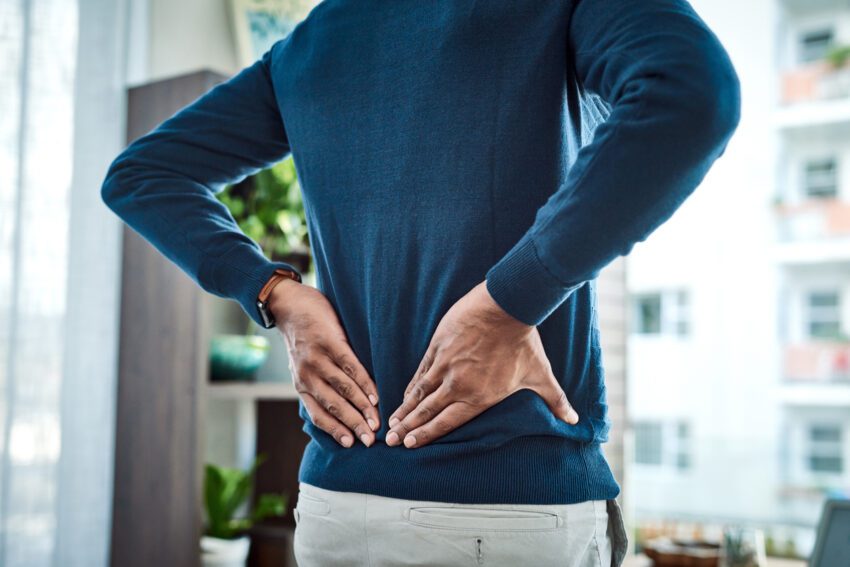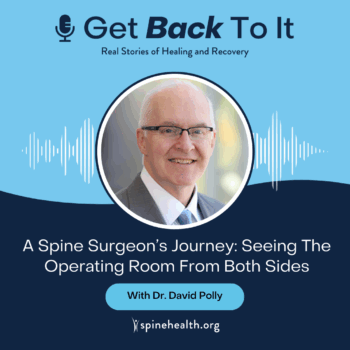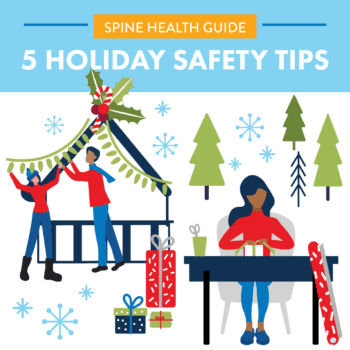Low back pain is a common symptom where you feel pain in the lower part of your back. It can range from a dull, constant ache to a sudden, sharp pain. It can make it hard to move or do everyday activities.
Common Causes
- Muscle or ligament strain: Lifting heavy objects or sudden movements can strain the muscles and ligaments in your back.
- Annular Tear: When the outer lining of the disc develops cracks or tears.
- Poor posture: Sitting, standing, or sleeping incorrectly for long periods can strain your back.
- Injury: Trauma from falls, car accidents, or sports.
- Degenerative disc disease: Wear or damage in the lumbar discs.
Symptoms
- Pain that is dull, aching, or sharp.
- Pain that gets worse with movement.
- Stiffness in the lower back.
- Muscle spasms.
Diagnostic Tests
- Medical history: Discussing your symptoms and possible causes with your doctor.
- Physical exam: The doctor checks for pain, range of motion, and muscle strength.
- X-rays: Pictures of the spine to see bone alignment and any damage.
- MRI or CT scan: Detailed images of the spine to check for issues with the discs, nerves, and other tissues.
- Blood tests: To check for other medical conditions that might be causing the pain.
First-Line Treatment Options
- Medications: Over-the-counter pain relievers or prescription medications to reduce pain and inflammation.
- Physical therapy: Exercises to strengthen core muscles and improve flexibility.
- Injections: Steroid injections to reduce inflammation and pain.
- Chiropractic care: Manual adjustments to improve spine alignment.
- Heat and ice therapy: Applying heat or ice to reduce pain and swelling.
Common Conditions That Can Cause Similar Symptoms
- Herniated disc: When the inner part of a spinal disc pushes out and presses on a nerve.
- Lumbar spondylosis: Wear and tear on the spine due to aging.
- Pinched nerve: Pressure on a nerve in the low back.
- Osteoporosis Fractures: A condition where bones become weak and brittle, leading to fractures.
When to See the Doctor
- If you have persistent back pain that doesn’t get better with rest.
- If you experience numbness, tingling, or weakness in your legs.
- If the pain interferes with your daily activities or sleep.
- If you have difficulty walking or standing for long periods.
What to Ask the Doctor
- What is causing my symptoms?
- What treatment options are available?
- How long will it take to recover?
- What are the risks and benefits of surgery if needed?
- Are there specific exercises I should do or avoid?
Home Remedies for Mild Symptoms
- Exercise: Gentle exercises can help strengthen muscles and reduce pain.
- Stretching: Regular stretching or yoga can relieve muscle tension and improve flexibility.
- Pain relief: Over-the-counter pain relievers like ibuprofen or acetaminophen can help with pain.
- Proper posture: Maintain good posture to reduce pressure on the spine.
- Heat or ice therapy: Applying heat or ice can reduce pain and swelling.
Understanding low back pain can help you know when to seek medical advice and what questions to ask your doctor. Early detection and treatment can help diagnose and manage the underlying condition and improve your quality of life.



